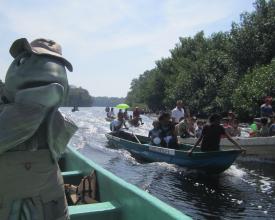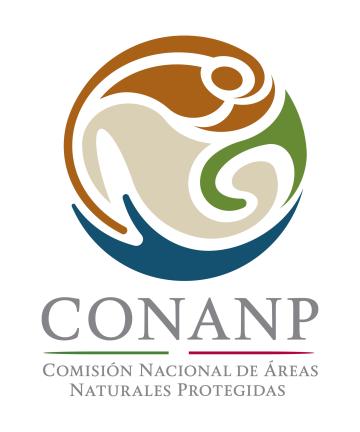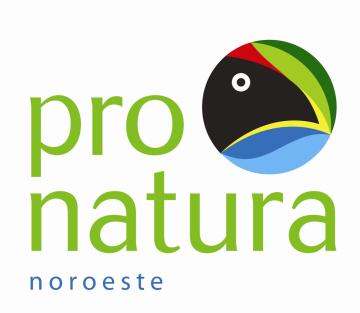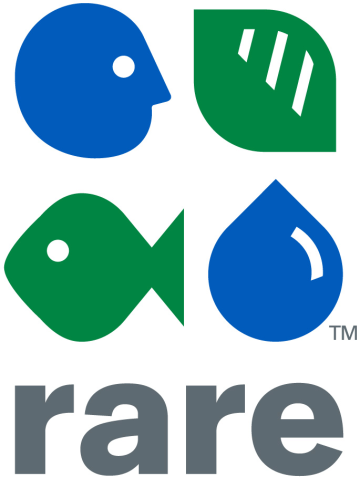
Gestión comunitaria de los recursos marinos
Solución completa
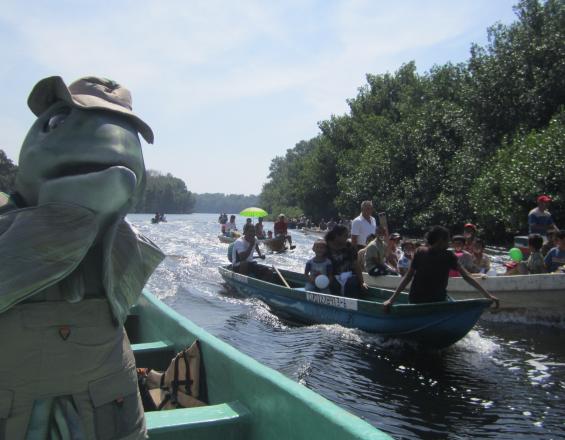
La mascota Robalin preside la "Fiesta de la Navegación para una Pesca Responsable
Ramón Flores, CONANP
Las campañas de conservación Pride se llevan a cabo en cuatro países latinoamericanos para generar una administración comunitaria de los recursos marinos, mediante la adopción de Zonas de Reabastecimiento Pesquero (ZRP), actividades alternativas de ingresos y cambios voluntarios de artes de pesca. El marketing social, la asistencia técnica pesquera, la capacitación y el seguimiento biológico modificaron el comportamiento de las comunidades para reducir las amenazas pesqueras y aumentar la abundancia de peces, la diversidad de especies y la salud del hábitat.
Última actualización: 02 Oct 2020
4252 Vistas
Contexto
Défis à relever
Sobrepesca, ausencia o cumplimiento limitado de las Zonas de Reposición de Pesquerías - Sobrepesca - Ausencia o cumplimiento limitado de las Zonas de Reposición de Pesquerías - Prácticas pesqueras insostenibles - Falta de aceptación, falta de propiedad, de cuidado de las comunidades por sus recursos - Falta de grupos organizados de pescadores y de unidad
Ubicación
México
América Central
Sudamérica
América del Norte
Procesar
Resumen del proceso
El programa de formación es, sin duda, uno de los componentes más importantes de una campaña Pride, ya que prepara a los participantes para el éxito, reforzando sus capacidades y habilidades necesarias para los demás componentes básicos. Entre ellos, la Teoría del Cambio es el marco del proyecto que se utiliza en las campañas Pride para la planificación estratégica, la toma de decisiones en curso y la evaluación. Representa una hipótesis de cómo la campaña Pride puede ayudar a abordar cuestiones críticas de conservación y es la base necesaria para diseñar una investigación formativa fiable. Esta investigación ayuda a definir objetivos de campaña realistas y mensurables en relación con los conocimientos, la actitud, la comunicación interpersonal y las barreras percibidas de la audiencia para un determinado cambio de comportamiento. Estos objetivos se abordan tanto a través del marketing social como de actividades de asistencia técnica que se alinean con las características de la audiencia objetivo y las etapas del cambio de comportamiento. El impacto de la campaña en estos objetivos, así como en las metas de reducción de amenazas y conservación, se mide a través del componente de seguimiento y evaluación.
Bloques de construcción
Programa de formación Pride
La formación del Programa Pride de Rare es un proceso de dos años mediante el cual los líderes locales de la conservación reciben formación universitaria formal, seguida de periodos de investigación formativa sobre el terreno y análisis de resultados. Los participantes aprenden a cambiar actitudes y comportamientos, movilizar apoyos para la protección del medio ambiente y reducir las amenazas a los recursos naturales. Los socios locales de Rare no sólo reciben formación en el aula, sino que también ponen en marcha toda una campaña de marketing social en sus comunidades, diseñada en torno a un objetivo de conservación específico. Los participantes en el programa reciben un conjunto de herramientas para la divulgación comunitaria: La formación 1 proporciona a los participantes herramientas básicas de participación comunitaria, para que puedan empezar a integrarse en el público objetivo y ganarse su confianza. La formación 2 tiene lugar tras un periodo de 1-2 meses de inserción sobre el terreno, y enseña técnicas de investigación formativa cualitativa y cuantitativa. La formación 3 tiene lugar tras 2-3 meses de recogida de datos e información, para analizar los datos recogidos y diseñar la campaña Pride. La formación 4 tiene lugar una vez concluida la campaña, para evaluar los resultados y elaborar el informe final.
Factores facilitadores
- Compromiso del socio para garantizar la dedicación a tiempo completo de los becarios participantes en el programa Pride.
- Compromiso pleno y continuado y progreso adecuado de los becarios durante toda la duración del programa. - Un título mínimo de bachillerato para los participantes/becarios del programa. - Un plan de estudios Pride básico, adaptado al tema programático. - Infraestructura básica, así como equipo de formación.
Lección aprendida
Un elemento clave para el éxito del programa de formación Pride es contar con entregables específicos y evaluaciones frecuentes de la capacidad. Estos resultados y calificaciones se registran en una herramienta en línea que permite el seguimiento por múltiples partes. La misma evaluación básica de formación se realiza al principio de la cohorte y al finalizar cada fase de formación. El hecho de que los participantes tengan diferentes orígenes y niveles de formación académica (bachillerato o estudios universitarios) supone un reto y una oportunidad. El reto es tener que adaptar el contenido de las lecciones y las actividades para dar cabida a estas diferencias. La oportunidad es precisamente aprovechar estas diferencias en cuanto a conocimientos y formación para reclutar a participantes que compartan experiencias pasadas y ayuden a sus compañeros en el proceso de aprendizaje como mentores.
Recursos
Marketing social (SM)
El marketing social (SM) utiliza métodos y herramientas de marketing comercial (por ejemplo, difusión de innovaciones, canales y mensajes de comunicación centrados en el cambio de comportamiento, movilización de la comunidad) para promover un cambio de comportamiento voluntario en un público objetivo, que beneficie tanto a la sociedad como al grupo objetivo. Para una campaña Pride, el marketing social es un componente integral para promover la administración comunitaria de sus recursos. La creación de una identidad clara, coherente y positiva (es decir, una marca) en torno a la conservación/gestión de sus recursos que resuene con las percepciones, valores y tradiciones de la comunidad en relación con estos recursos ayuda a impulsar la adhesión de la comunidad. Esta marca está vinculada a una petición clara (por ejemplo, qué quiere que haga su público objetivo en lo que respecta a la gestión sostenible de sus recursos), y ambas se subrayarán y repetirán a lo largo de las actividades de la campaña (por ejemplo, actos comunitarios, difusión en los medios de comunicación) y los materiales promocionales (por ejemplo, carteles, folletos, octavillas, murales, accesorios, mensajes de texto) que forman parte de la estrategia de marketing social.
Factores facilitadores
- Tamaño adecuado de la audiencia objetivo para (100+) - Determinar claramente los cambios de comportamiento de la audiencia que conducen a los objetivos de conservación - Investigación formativa bien diseñada, planificada, ejecutada y analizada que dilucide las condiciones de los cambios de comportamiento Definir las características de la audiencia Definir claramente el grado de preparación de la audiencia para adoptar nuevos comportamientos Adaptar los canales de comunicación, las actividades y los mensajes Involucrar a la audiencia y a las principales partes interesadas en el diseño y la ejecución de la estrategia de marketing Aumentar la apropiación/responsabilidad Voluntad del socio ejecutor de adoptar herramientas de gestión estratégica
Lección aprendida
Las campañas que mejor siguen estos "pasos" (es decir, los factores facilitadores) desarrollan actividades, mensajes y eligen canales de comunicación que se ajustan a las características de su público y a la fase de cambio de comportamiento. Estas estrategias de mercadotecnia social bien desarrolladas han demostrado que aceleran la adopción de prácticas sostenibles por parte del público destinatario, mediante la creación de apoyo comunitario, la aceptación de fuentes de confianza del público y personas influyentes clave, así como mensajes claros, centrados y concisos a través de materiales de mercadotecnia y los medios de comunicación.
Recursos
Seguimiento y evaluación
El seguimiento y la evaluación son componentes vitales de toda campaña Pride, sin los cuales no es posible evaluar la eficacia de la intervención. El seguimiento y la evaluación tienen lugar en cada uno de los componentes de la Teoría del Cambio (consulte la sección "Teoría del Cambio" para obtener una breve descripción de cada componente). El seguimiento lleva la cuenta de la eficacia con la que se desarrollan las capacidades, la eficacia con la que los esfuerzos de marketing social conducen a cambios de comportamiento y si esos cambios de comportamiento conducen a los resultados de conservación deseados. Básicamente, la supervisión realiza un seguimiento de todos los componentes de la TdC. El seguimiento y evaluación de los conocimientos, actitudes, comunicaciones interpersonales y cambios de comportamiento se basa en encuestas a los pescadores antes y después de la campaña, mientras que los resultados de reducción de amenazas y conservación utilizan protocolos específicos validados por expertos.
Factores facilitadores
- Contar con un socio o consultor local de seguimiento es clave para desarrollar datos de referencia oportunos y supervisar los resultados de la reducción de amenazas y la conservación. - Como en cualquier proyecto o programa, contar con financiación adecuada y suficiente es clave. Los equipos pueden recurrir a las capacidades humanas, de equipamiento, de instalaciones y financieras existentes para reducir costes.
- Los lugares con una larga tradición de seguimiento están mejor preparados para producir una base sólida de indicadores de seguimiento biológico.
Lección aprendida
Una lección importante relacionada con el seguimiento biológico es cuando existe la posibilidad de contar con un equipo de dos personas para cada campaña, un Director de Campaña (CM) y un Becario de Pesca (FF). Esta disposición permite que una persona se concentre en los aspectos técnicos de la pesca, incluido el tiempo necesario para el seguimiento biológico. El grado de implicación del FF en el componente de seguimiento depende de su inclinación personal hacia la ciencia. Hay ejemplos en los que el FC dedicó una cantidad considerable de tiempo y esfuerzo a realizar el seguimiento y analizar los datos, mientras que otros no participaron en absoluto. Esto podría mejorar con una definición más clara del papel del FF en lo que respecta al seguimiento biológico. Contar con una persona dedicada al seguimiento en el equipo de Rare garantizó que todas las campañas pesqueras tuvieran datos de referencia y de impacto posteriores a la campaña.
Teoría del Cambio (TdC)
Una Teoría del Cambio (TdC) es una hoja de ruta que traza el camino desde donde estamos ahora hasta donde queremos estar. La TdC sirve para crear una visión común de los objetivos a largo plazo, cómo se alcanzarán y cómo se medirá el progreso a lo largo del camino. La TdC constituye la base de la planificación estratégica y explica claramente cómo el cambio de comportamientos y normas sociales reducirá las amenazas a la biodiversidad. Los TdC de una campaña Pride constan de siete elementos: Resultado de conservación: indica el objetivo de conservación (ecosistema o especie) que la campaña pretende conservar y cuál es el resultado previsto a largo plazo. Reducción de amenazas señala las principales amenazas para el objeto de conservación que pueden reducirse. Cambio de comportamiento se centra en el comportamiento humano que debe cambiar para reducir la amenaza identificada. Eliminación de barreras identifica las barreras para la adopción del nuevo comportamiento y cómo pueden eliminarse. La comunicación interpersonal describe qué conversaciones son necesarias para animar a la gente a adoptar el nuevo comportamiento. La actitud identifica las actitudes que deben cambiar para que se produzcan estas conversaciones. El conocimiento es la cognición necesaria para aumentar la concienciación y ayudar a cambiar estas actitudes.
Factores facilitadores
- Un análisis previo de las condiciones del lugar, incluidos el ámbito geográfico, los objetivos de conservación, las amenazas y los factores contribuyentes - Objetivos claros a largo plazo del socio ejecutor
Lección aprendida
Algunos de los elementos clave del éxito relacionados con la TdC incluyen una conexión clara e inequívoca entre el resultado de conservación esperado y la amenaza que la campaña intenta reducir. Aunque la amenaza seleccionada no siempre sea la más importante para el objetivo de conservación, tiene que ser una que pueda mitigarse mediante un cambio en el comportamiento humano. Asimismo, es vital identificar un cambio de comportamiento específico que esté directamente relacionado con la amenaza seleccionada.
Recursos
Asistencia técnica (AT)
A diferencia del Marketing Social, la Asistencia Técnica (AT) se basa en interacciones más personales con los pescadores a nivel de grupo de pesca (cooperativas o asociaciones) o a nivel de pescador individual. Esto permite abordar los temas con más detalle y profundidad, aunque no se llega a grupos más amplios de personas. El objetivo general es promover el apoyo de los pescadores a las acciones de conservación (por ejemplo, la creación de ZRF o la adopción de prácticas pesqueras sostenibles). Las herramientas de asistencia técnica están orientadas a crear capacidad en las comunidades costeras y eliminar las barreras técnicas, haciendo hincapié en el liderazgo de los pescadores para mejorar la gestión de los recursos pesqueros. Algunos ejemplos de actividades de asistencia técnica son las conversaciones individuales, las salidas de pesca, los intercambios de pescadores entre lugares, la formación formal en métodos de pesca específicos a través de talleres y cursos, la formación informal, las reuniones con las autoridades, el seguimiento de los procesos administrativos y legales (p. ej., renovación de concesiones/permisos de pesca) y el suministro de material organizativo (p. ej., archivadores, pizarras, etc.).
Factores facilitadores
- El alto nivel de experiencia y conocimientos técnicos del socio ejecutor permite intervenciones de AT más profundas y detalladas con los pescadores. - Una investigación formativa bien diseñada, ejecutada y analizada apoya la definición de áreas temáticas para la AT. - Asociaciones con organismos gubernamentales y ONG para añadir recursos humanos y financieros y dar a los pescadores la seguridad de que se reconoce su esfuerzo. - Participación del público destinatario en el diseño y la futura ejecución de las actividades de AT para generar apropiación y contribuir a reducir la resistencia al esfuerzo de la campaña.
Lección aprendida
Las intervenciones de Asistencia Técnica ayudan a la campaña a abordar los problemas identificados en la etapa de Eliminación de Barreras, pero las intervenciones no se limitan necesariamente a esa etapa del proceso. A pesar de las diferencias en el contexto de cada lugar de campaña, definido por las condiciones del país y de la industria pesquera, se identificaron áreas temáticas muy similares para cada estrategia de AT.
Crear confianza con los pescadores es un paso primordial para todas las actividades de AT. Las actividades en las que participa el mayor número posible de pescadores generan apropiación en los pescadores y facilitan la adopción de comportamientos. Además, se capacita a los pescadores para hacer un seguimiento de los acuerdos derivados de cada actividad, mejorar su autoorganización, establecer acuerdos internos o con terceros para reafirmar y garantizar públicamente sus decisiones colectivas, y promover su participación en actividades que repercutan en el proceso de toma de decisiones sobre la gestión pesquera.
Investigación formativa
Durante la fase de planificación, una amplia investigación formativa sirve de base para los componentes de marketing social y asistencia técnica de una campaña. La investigación establece las líneas de base que permiten evaluar los impactos sociales y de conservación tras una campaña. La investigación cualitativa (por ejemplo, grupos de discusión, observación, entrevistas en profundidad) está orientada a comprender las opiniones, sentimientos, preocupaciones y beneficios percibidos por el público objetivo de las prácticas de gestión actuales y deseadas. La investigación cualitativa consiste en crear una conversación informal con y entre los participantes para establecer una relación cómoda y revelar información subyacente que no puede obtenerse mediante la investigación cuantitativa. Las encuestas de investigación cuantitativa recogen respuestas concretas a preguntas específicas para describir la demografía, identificar las preferencias de los medios de comunicación y evaluar el estado actual de conocimientos, actitud, comunicación y disposición de los públicos objetivo respecto a un determinado cambio de comportamiento. Ambos componentes informan en última instancia las decisiones de la campaña, como los objetivos, las actividades respectivas, los materiales y los mensajes, tanto para el marketing social como para la asistencia técnica.
Factores facilitadores
- Formación sobre métodos de investigación cualitativa y cuantitativa. - Guía/procedimiento genérico de investigación cualitativa para ayudar al investigador en la preparación y durante las rondas de investigación. - Plantillas para facilitar los análisis de investigación cualitativa. - Investigación cuantitativa (es decir, encuesta), siguiendo las mejores prácticas de diseño de preguntas de encuesta para evitar sesgos en las respuestas de los encuestados. - Base comprometida de voluntarios para apoyar la realización de encuestas. - Software para procesar y analizar datos cuantitativos.
Lección aprendida
Las técnicas de investigación cualitativa (por ejemplo, los grupos de discusión y las entrevistas en profundidad) orientadas a conocer las opiniones, sentimientos y preocupaciones del público objetivo respecto a un determinado cambio de comportamiento son esenciales para crear conversaciones informales entre los participantes. Esto permite crear un entorno de confianza en el que los pescadores se sientan cómodos expresando lo que realmente piensan en lugar de expresar lo que otros quieren oír. Esto último haría que los datos fueran poco fiables. Las encuestas que se basan en los resultados de la investigación cualitativa tienden a fundamentar mejor las estrategias de las campañas, haciéndolas más acordes con sus metas y objetivos. Es esencial evitar contratiempos a la hora de realizar encuestas, por lo que es necesaria una planificación detallada basada en el tamaño de las muestras y los recursos humanos. En este sentido, es esencial establecer relaciones sólidas con un grupo comprometido de voluntarios de campaña que apoyen esta tarea.
Impactos
Entre las repercusiones más destacadas logradas con la aplicación de esta Solución figuran la adopción de cuadernos diarios de pesca nuevos o mejorados para una mejor recopilación de datos pesqueros, la designación voluntaria de reservas comunitarias por parte de las cooperativas pesqueras, el establecimiento de conexiones de mercado a partir de la mejora de las ventas de productos pesqueros, la adopción de actividades de ingresos alternativos, los cambios voluntarios de artes de pesca, la aprobación y adopción por parte de los pescadores de Zonas de Reposición Pesquera específicas ya existentes, y la adopción de métodos de pesca de langosta viva para la sostenibilidad de los recursos.
El impacto general más destacado fue la demostración del poder de la conservación marina basada en la comunidad, y la validación de cómo los pescadores organizados son más capaces de mantener los derechos de pesca, un mayor cumplimiento de la normativa pesquera y el acceso a mercados especiales y actividades de valor añadido.
Beneficiarios
Pescadores, familias de pescadores, comunidades costeras, gestores de AMP y partes interesadas, autoridades gubernamentales, público en general / sociedad civil
Historia
La Encrucijada; diseño cooperativo para una pesca más fuerte. En las comunidades rurales de La Encrucijada, México, los pescadores se están organizando. El mar es la principal fuente de ingresos de la gente, pero la sobrepesca ha ejercido presión sobre los recursos marinos y los medios de subsistencia. En 2011, Rare se asoció con la CONANP para fortalecer seis cooperativas pesqueras que tienen acceso exclusivo a la pesca en las aguas circundantes y protegen la diversidad biológica de los manglares y lagunas circundantes. El proyecto tenía como objetivo reforzar la capacidad organizativa de las cooperativas y ayudarles a establecer reservas de veda para que las poblaciones de peces se repongan por sí solas. "Al principio, los pescadores sólo querían saber si les pagarían y cuánto duraría el proyecto", cuentan Aurora y Ramón, becarios de Rare Conservation que trabajan para la CONANP.
En un taller, la conversación se volvió tensa sobre la zonificación de las reservas pesqueras. Cuando el debate parecía llegar a un punto muerto, los hijos y las esposas de los pescadores interrumpieron el diálogo con un "flashmob", un tipo de actividad de marketing. Los niños llevaban carteles con mensajes como: "Tenemos derecho a crecer y los peces también". Cuando se marcharon, la sala quedó en silencio. Aquello motivó a los pescadores. No sólo vieron los beneficios económicos de las reservas, sino que las relacionaron con su mayor prioridad: la familia. La conciencia de los pescadores sobre su impacto en los recursos marinos aumentó y ahora se sienten orgullosos de su papel como administradores y beneficiarios de los recursos marinos. Se dan cuenta de lo mucho que se ha fortalecido la cooperativa y asumen la responsabilidad de la salud de las poblaciones de peces, incluso liberando a los peces juveniles de talla inferior a la reglamentaria que capturan. Estas cooperativas pesqueras crearon seis reservas para mejorar su pesquería a largo plazo.
Los pescadores esperan mejorar el tamaño de sus peces y, por tanto, los precios de sus capturas como resultado de esta decisión. Las habilidades y herramientas de la nueva organización les han hecho "comerciales" ante los posibles compradores. Con el firme apoyo del equipo de campaña y del alcalde de la localidad, las cooperativas, a través de actos como el "Gourmet Fest", han llegado a acuerdos con restaurantes para conseguir un mercado para su pescado el año que viene.
"No respetábamos el tamaño ni las especies, y mucho menos la vida de los peces, pero la zonificación de las reservas permanentes fue un día inolvidable para cambiar eso", dice Conrado Molina Santos, pescador local. "Nuestra sociedad comprendió la pesca sostenible y los beneficios que podíamos obtener". https://vimeo.com/70339429
Conectar con los colaboradores
Otros colaboradores
Tjerk van Rooij
Raro
Ulises Méndez
Raro
Ramón Alberto Flores Moreno
CONANP
Sandra Conde
Raro
Marissa Anzueto
Raro
Rafael Calderón
Raro
Keith Alger
Raro
Nakul Saran
Raro
Dulce Espelosina
Raro
Pablo Granados
Raro

